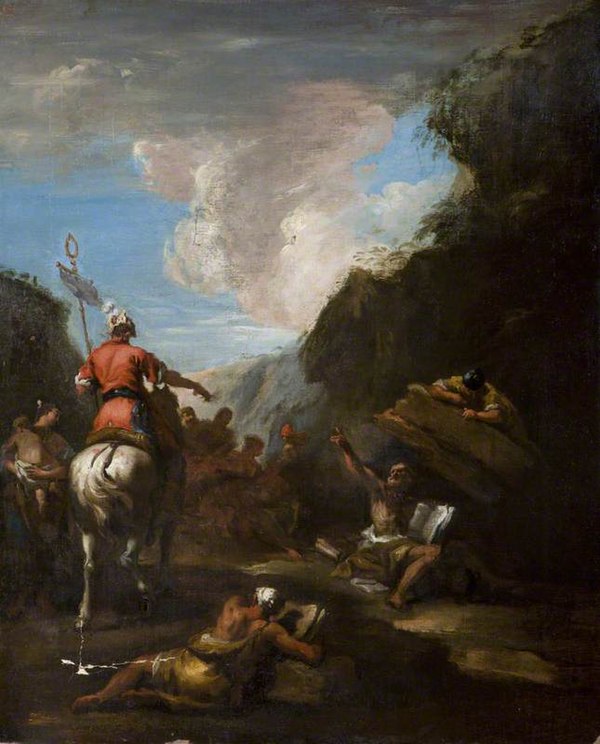After the Battle of Trebia, there was shock when news of the defeat reached Rome, but this calmed once Sempronius arrived, to preside over the consular elections in the usual manner. The consuls-elect recruited further legions, both Roman and from Rome's Latin allies; reinforced Sardinia and Sicily against the possibility of Carthaginian raids or invasion; placed garrisons at Tarentum and other places for similar reasons; built a fleet of 60 quinqueremes; and established supply depots at Ariminum and Arretium in preparation for marching north later in the year. Two armies – of four legions each, two Roman and two allied, but with stronger than usual cavalry contingents – were formed. One was stationed at Arretium and one on the Adriatic coast; they would be able to block Hannibal's possible advance into central Italy and be well positioned to move north to operate in Cisalpine Gaul.
The following spring the Romans positioned two armies, one on each side of the Apennines, but were surprised when the Carthaginians crossed the mountains by a difficult but unguarded route. The Carthaginians moved south into Etruria, plundering, razing the villages and killing all adult males encountered. Flaminius, in charge of the nearest Roman army, set off in pursuit. Hannibal arranged an ambush on the north shore of Lake Trasimene and trapped the Romans, killing or capturing all 25,000 of them. Several days later the Carthaginians wiped out the entire cavalry of the other Roman army, who were not yet aware of the disaster. This destruction of an entire army as a result of ambush by an entire other army is widely considered a unique occurrence. The Carthaginians continued their march through Etruria, then crossed to Umbria and marched south into Apulia, in the hope of winning over some of the ethnic Greek and Italic city-states of southern Italy.
News of the defeat caused a panic in Rome and led to the election of Quintus Fabius Maximus Verrucosus as dictator, but, impatient with his "Fabian strategy" of avoiding pitched conflict and relying instead on guerrilla tactics, the next year the Romans elected Lucius Aemilius Paullus and Gaius Terentius Varro as consuls. These more aggressive commanders engaged Hannibal at the Battle of Cannae in 216 BCE, a third disaster for Rome that was followed by thirteen more years of war.
















































